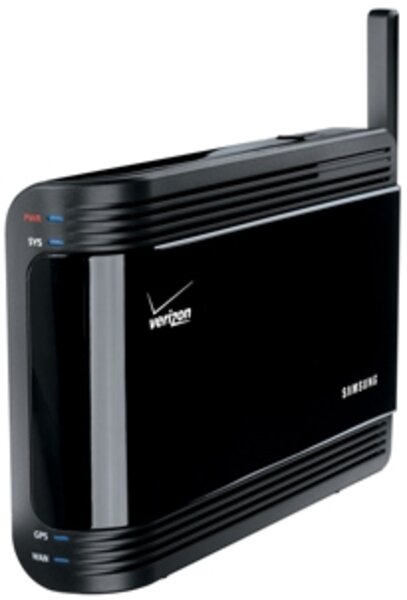Your own personal cell phone tower
Loading...
This year marked the first time that the number of American households that chose to use only cellphones surpassed those that stuck to just land lines. The government report said that the shift occurred faster than expected, especially since large swaths of the country still go without decent coverage. These “dead zones” include much of rural America, quiet suburban streets, and even some big-city apartments.
If you live in a valley that networks overlook, there are few options. You can master the art of leaning out the window at just the right angle, grab your jacket and call from the stoop, or look into a quietly rising device called a femtocell.
Femtocell is the industry term for a personal cellphone tower. The device, which resembles a computer modem, delivers cellphone signals through an Internet connection. Even if there are no cell towers in your county, a femtocell will surround your house with 5,000 square feet of coverage.
The set up is rather simple. Buy a femtocell from the carrier of your choice – each major phone company plans for a wide release before 2010. Connect the box to your modem or Internet router. (A broadband connection is required.) Femtocells also need a clear Global Positioning System (GPS) signal, which can be a sticking point for some people. The built-in GPS receiver automatically locates you during 911 calls and ensures that you’re not trying to trick the phone company in order to call from restricted areas such as other countries. If the device cannot make a solid GPS connection, it probably comes with an extension wire for the antenna. Try positioning it on a tall bookshelf or near a window.
Each network offers very different plans for its femtocells. Sprint’s Airave costs $100 for the box and charges $5 a month on top of your regular cellphone bill. For an extra $10 per month, Sprint will allow for unlimited Airave calls, so at-home calls will not count toward your normal allotment of mobile minutes. Verizon’s Network Extender costs $250, but has no extra monthly fees. Three cellphones can use it at a time – and a reserved fourth line is for 911 calls. AT&T is testing its Microcell and plans for a wider release later this year.
T-Mobile’s solution for patchy home coverage also relies on the Internet, but uses special phones that work with both cellular and Wi-Fi networks.
While helpful, femtocells remain mostly hidden from public attention. Carriers rarely acknowledge holes in their coverage, and such a device seems to highlight where the companies fall short. Because of this, femtocells receive little advertising, are not for sale in many stores, and are often only pitched to customers who threaten to cancel their service because of spotty coverage. Phone company websites are the best place to order femtocells and to learn more about individual plans.
With so little publicity, analysts can’t agree on whether the technology will take off. Some say the carriers’ half-hearted attempt to market femtocells will show (rightly or wrongly) that customers are not interested. Others are more bullish, with ABI Research predicting that sales will jump eightfold this year from the 100,000 sold in 2008.
More tech explainers:
Why are HDMI cables so expensive?
Why ‘more megapixels!’ doesn’t mean better pix
How cloud computing works





